Abstract
Young chickens were given 1, 10, 100, or 1000 presentations of grain in a hopper. Subsequently, the key was illuminated before each presentation of grain to study autoshaping of the key-peck response. The number of keylight-grain pairings before a bird first pecked the lighted key was found to be a U-shaped function of the number of prior food-only presentations, with pecks occurring significantly sooner after 100 food-only trials than after any of the other values. Two of five chicks at the 100-trial value pecked on the first illumination of the key. Experiment II showed further that when a series of food-only trials (no keylight) preceded keylight-only trials (no food) 30% of the chicks pecked the illuminated key. Experiment III extended the generality of first-trial pecking to pigeons. After preliminary training with food-only, two of five pigeons pecked on the first illumination of a key. The results suggest a close relationship between autoshaping and pseudo-conditioning.
Keywords: autoshaping, hopper training, response-independent food, one-trial acquisition, chickens, pigeons
Full text
PDF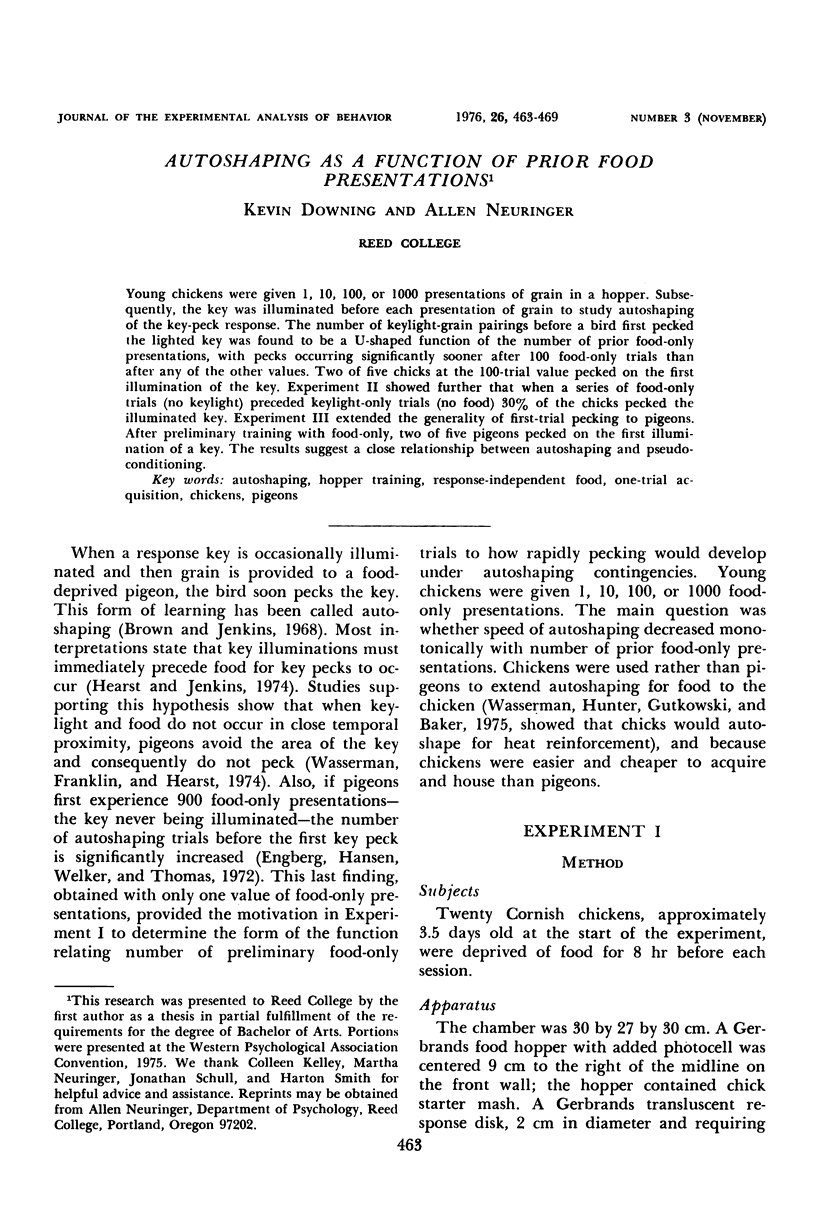
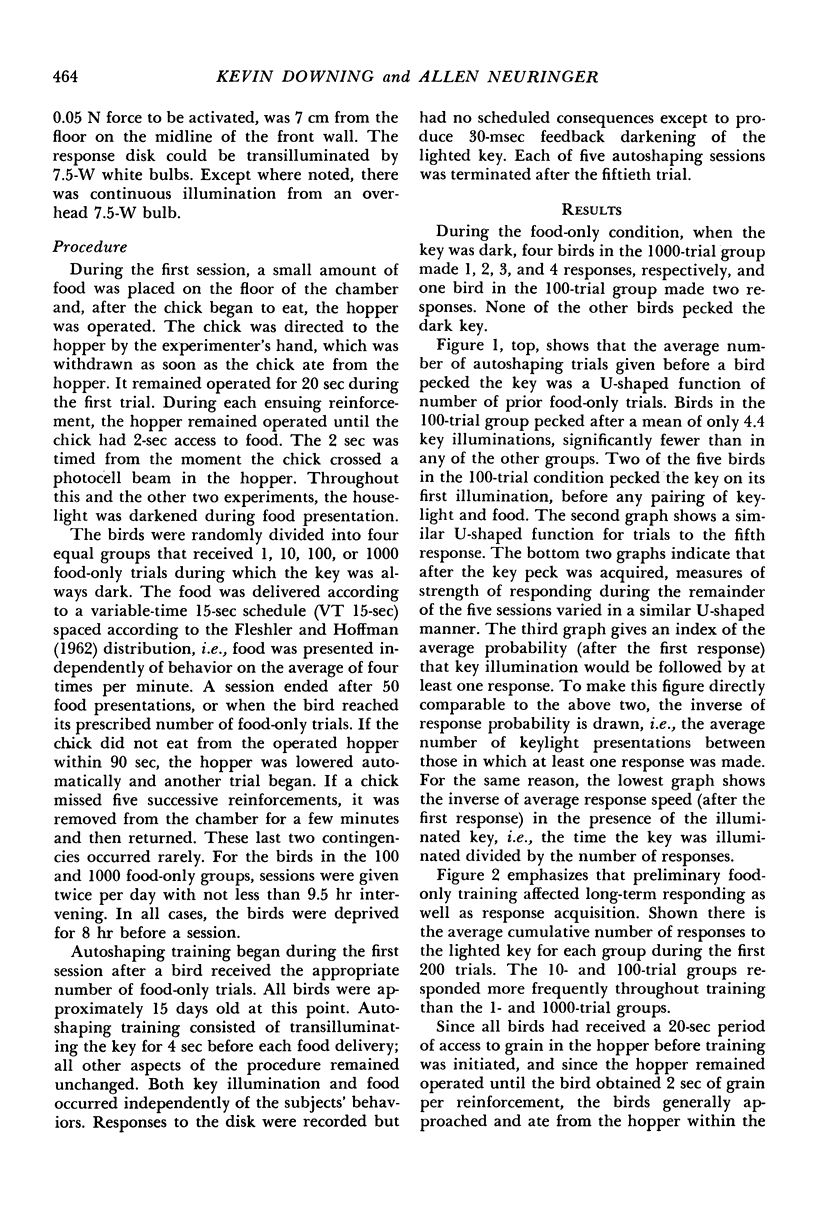
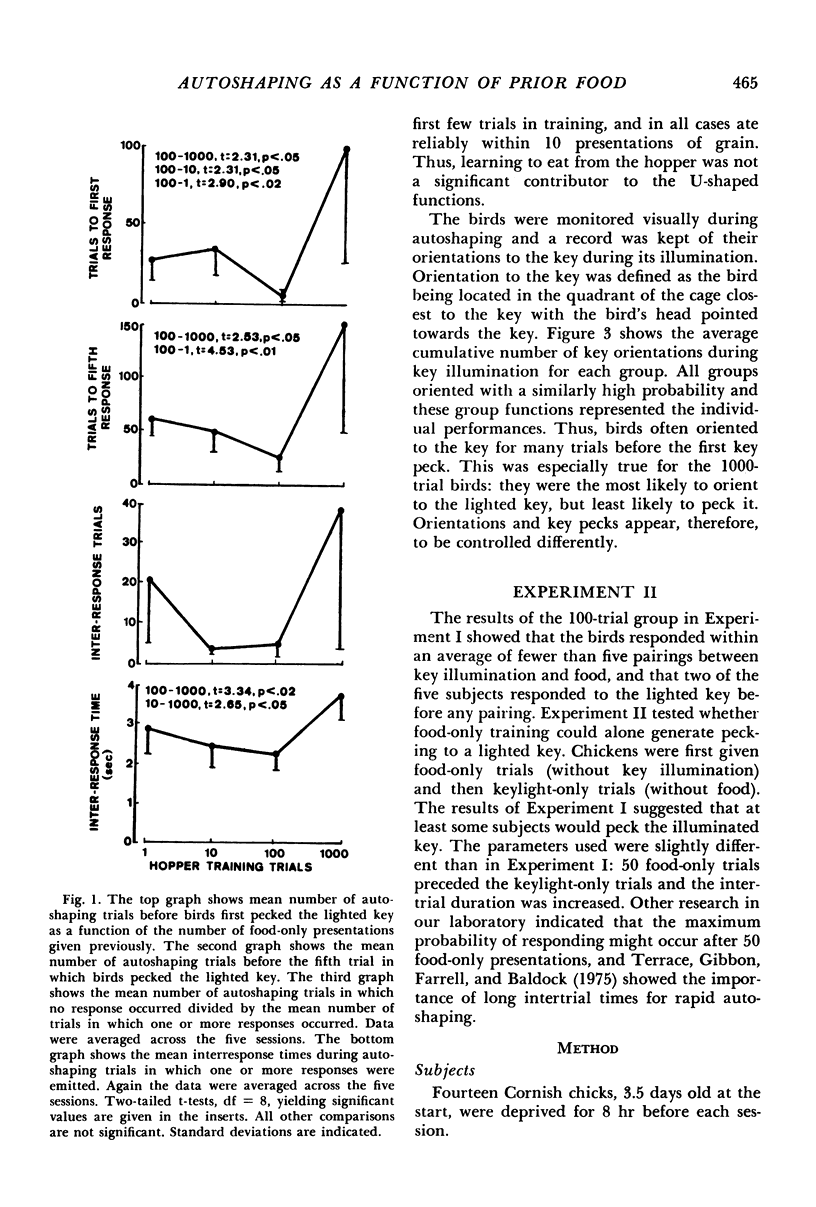
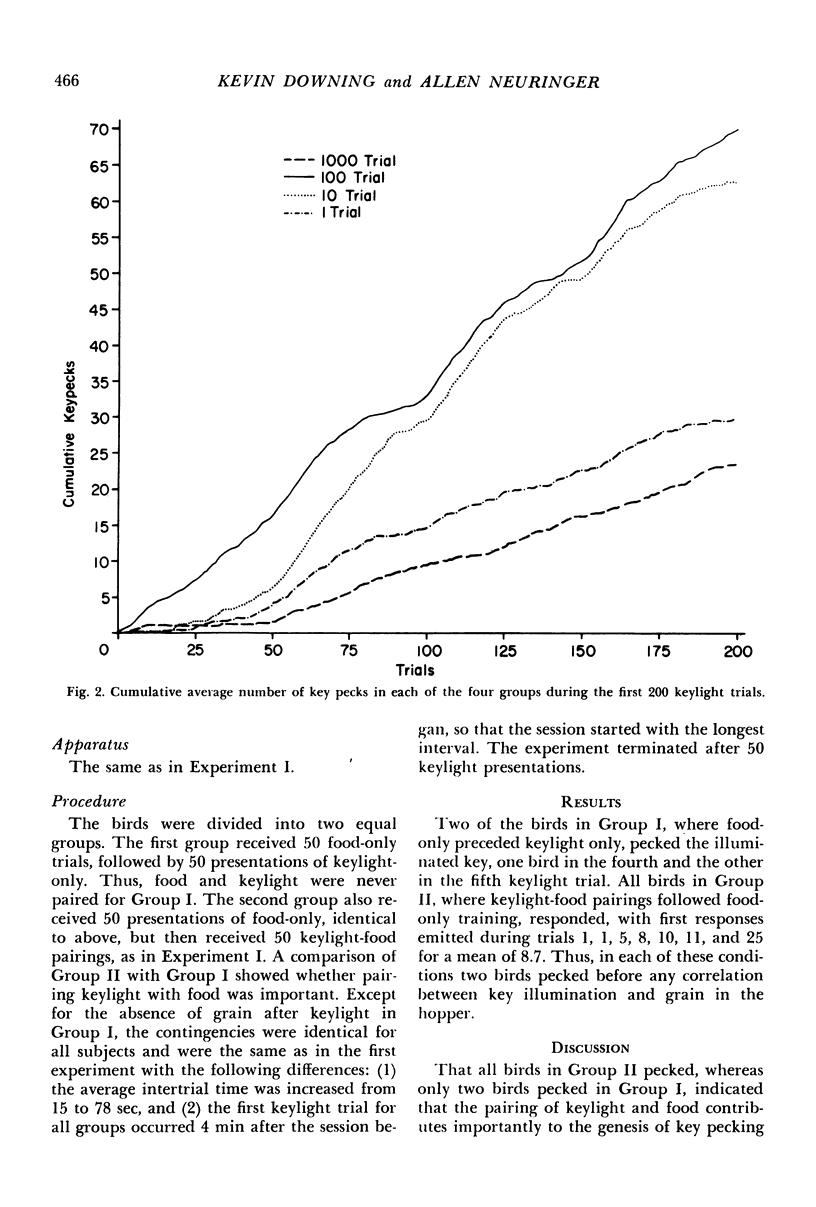
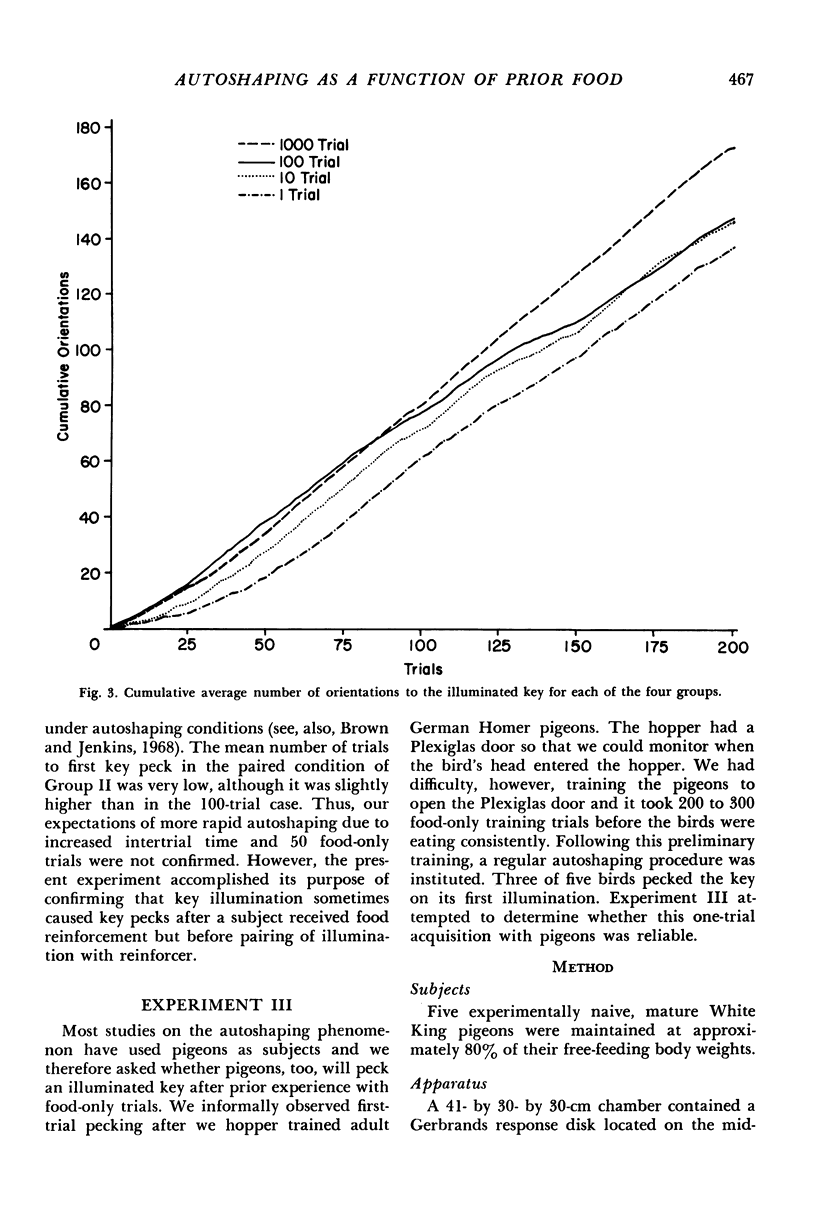
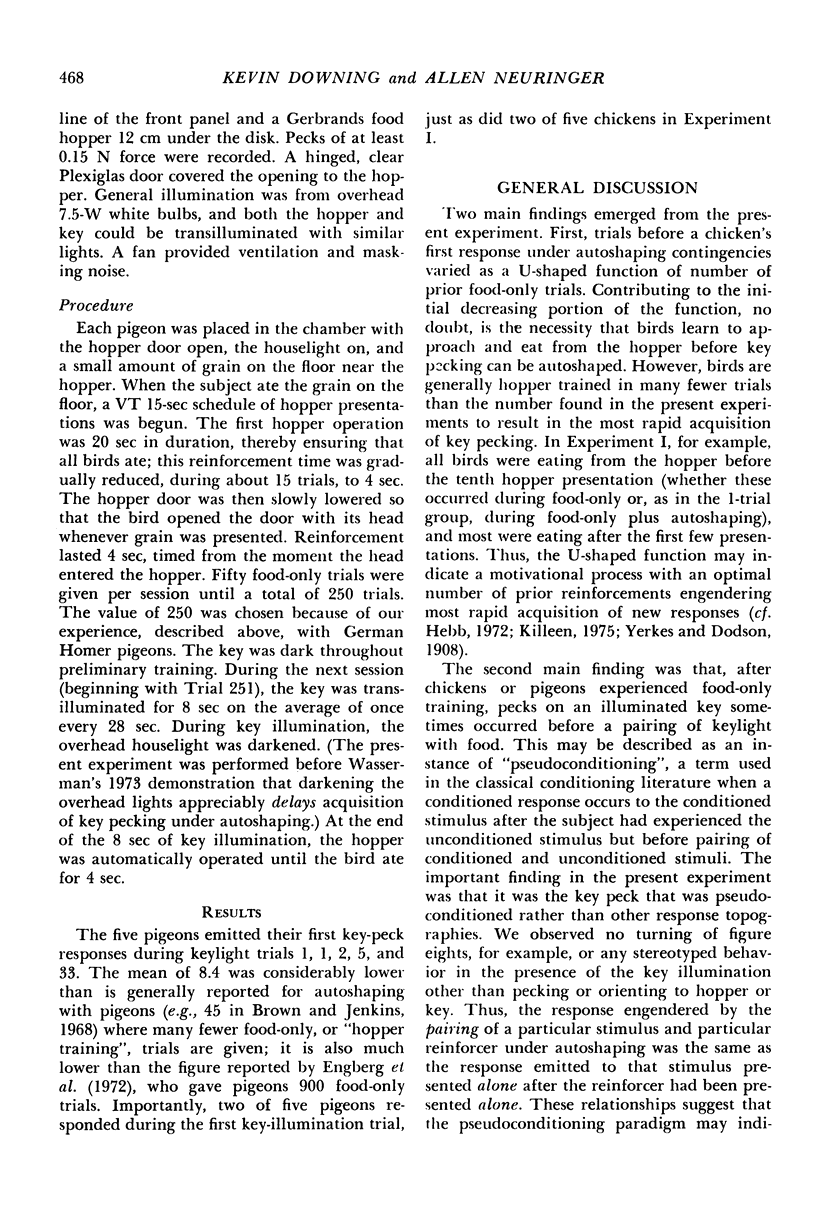
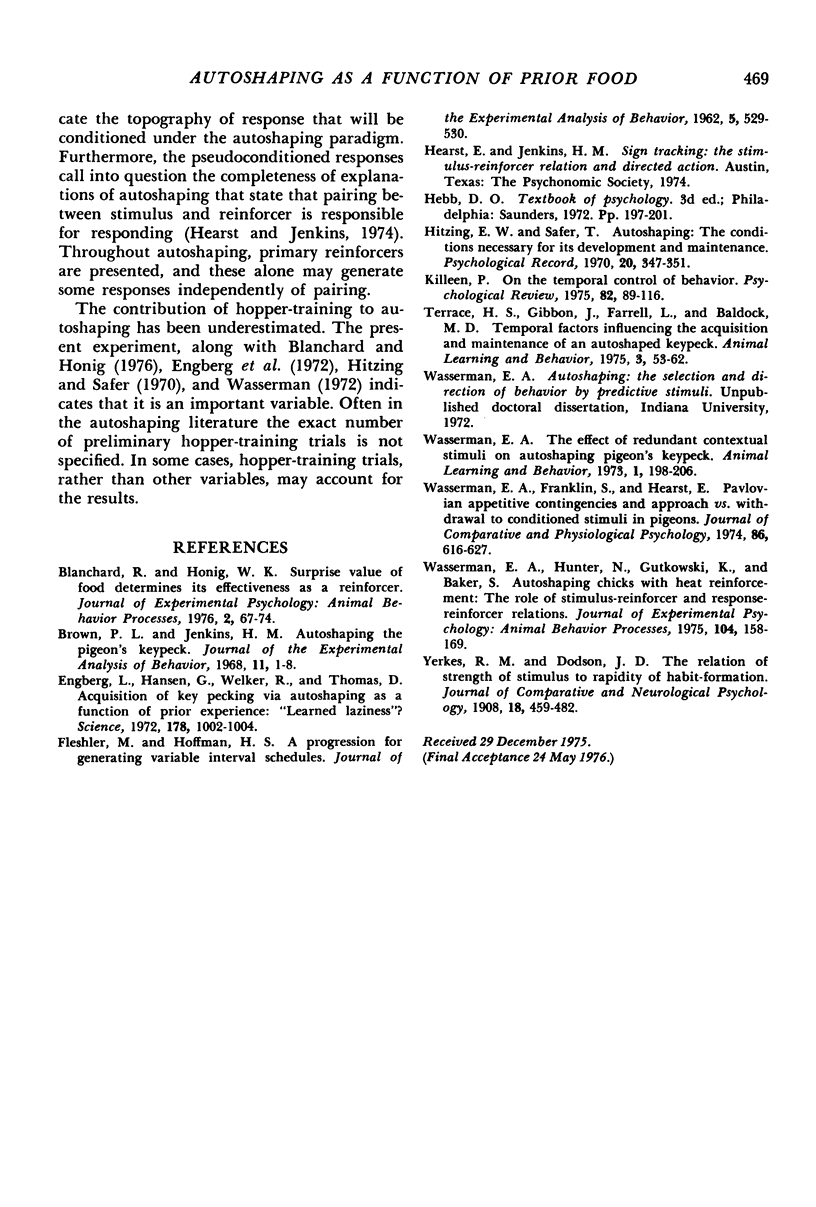
Selected References
These references are in PubMed. This may not be the complete list of references from this article.
- Brown P. L., Jenkins H. M. Auto-shaping of the pigeon's key-peck. J Exp Anal Behav. 1968 Jan;11(1):1–8. doi: 10.1901/jeab.1968.11-1. [DOI] [PMC free article] [PubMed] [Google Scholar]
- Engberg L. A., Hansen G., Welker R. L., Thomas D. R. Acquisition of Key-Pecking via Autoshaping as a Function of Prior Experience: "Learned Laziness"? Science. 1972 Dec 1;178(4064):1002–1004. doi: 10.1126/science.178.4064.1002. [DOI] [PubMed] [Google Scholar]
- FLESHLER M., HOFFMAN H. S. A progression for generating variable-interval schedules. J Exp Anal Behav. 1962 Oct;5:529–530. doi: 10.1901/jeab.1962.5-529. [DOI] [PMC free article] [PubMed] [Google Scholar]
- Wasserman E. A., Franklin S. R., Hearst E. Pavlovian appetitive contingencies and approach versus withdrawal to conditioned stimuli in pigeons. J Comp Physiol Psychol. 1974 Apr;86(4):616–627. doi: 10.1037/h0036171. [DOI] [PubMed] [Google Scholar]


